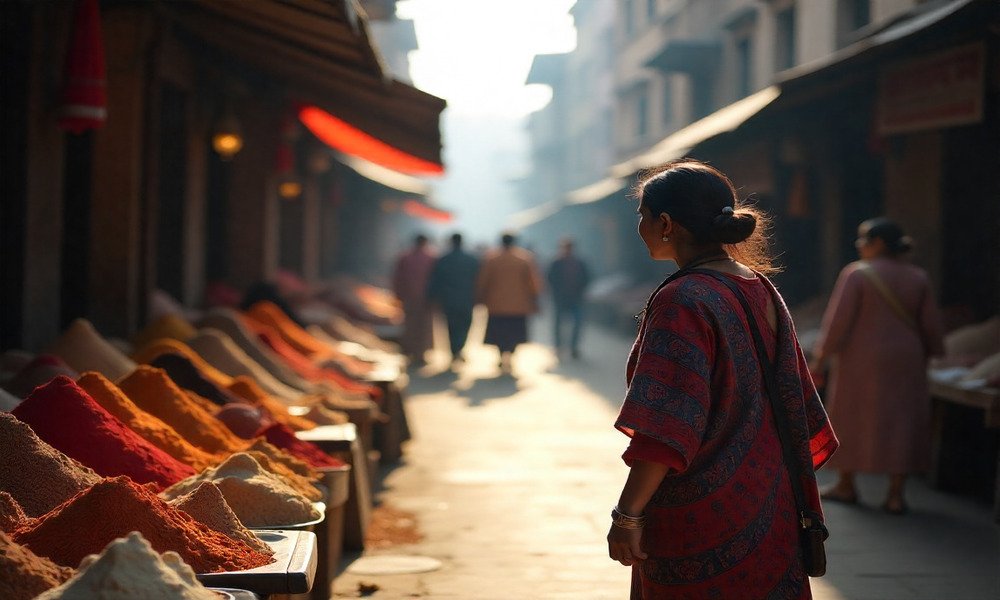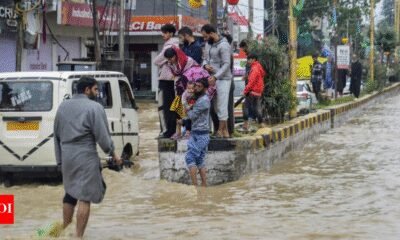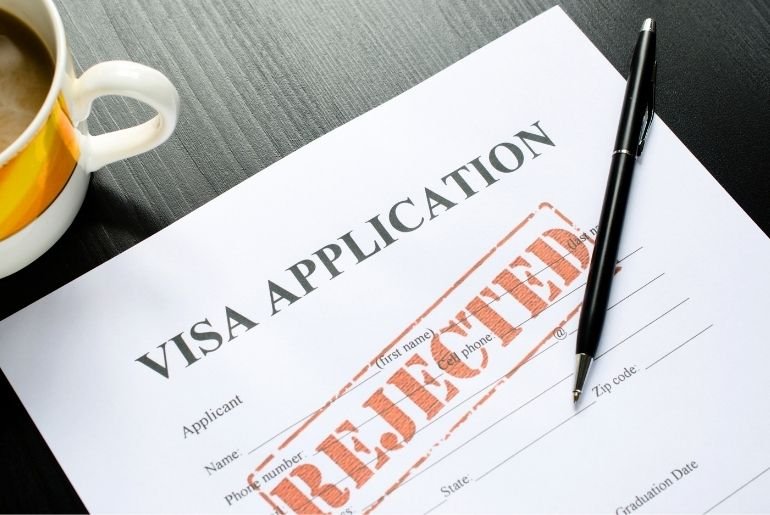In Vinland Saga, they speak of a faraway place, “a warm and fertile land, untouched by slave-raiders nor the flame of war” — where even the weary might find peace. Tolkien wrote of a similar “far, green country,” glimpsed on the edge of the world. As the plane slipped below the clouds, I thought of both. Sri Lanka stretched out in shades of green that seemed to multiply the longer I looked. A beautiful unbroken sweep of deep, restless, and endless green, cut only by the blue breath of the Indian Ocean and clouds brushing the horizon. From up here, it felt like a land made for gentleness, though its soil has known other things.
The road from Colombo’s Bandaranaike International Airport to the city was lined with coconut palms swaying in the heat, and hand-painted signs for mangoes, crab curry, and promises of “cool beer” leaning by the roadside. Every now and then, newer signs in Mandarin pointed the way to shiny casinos. The brisk air wrapped around me, and somewhere in it, I could feel sense a delicate optimism.
For the better part of a decade, Sri Lanka has lived through events that would test any country’s spirit. The shattering violence of the Easter Sunday bombings in 2019, the economic collapse of 2022, and the protests that swept through its streets with a force not seen in generations, are some of the recent occurrences in the country’s turbulent history. There were days when fuel queues curled for kilometres and nights when even candlelight felt like a luxury. Tourism, the once a proud pillar of the economy, seemed like a dream slipping further away.
And yet here we are, on the cusp of something resembling a renaissance. Sri Lanka is open again, and has stories to share.
An inner chamber from the Gangaramaya Temple in Colombo
| Photo Credit:
Ayaan Paul Chowdhury
The numbers tell part of the story. Tourist arrivals in 2024 surged past the million mark by mid-year, with India leading the way. Earnings from the sector crossed $1.5 billion in just six months, an achievement that took nearly all of the previous year to reach. The government has set its sights higher still, with 2.5 million arrivals and $4 billion in revenue by this year’s end, and twice that by 2026. It’s an enterprising plan that relies on visitor enthusiasm and also the country’s ability to convince the world it is safe, stable, and worth the journey.
Refhan Razeen, General Manager of Shangri-La Hambantota, sees the shifts in the industry up close. “It’s deeply rewarding,” he says of being part of Sri Lanka’s resurgence. “We have seen first-hand the strength of our people and the spirit of our guests, many of whom returned not just out of loyalty, but love. We are helping write a brighter chapter for the island we call home.”
It was against this period of rebuilding that Shangri-La invited me to stay at its two Sri Lankan properties — the city-front Colombo hotel and the southern coast’s Hambantota Golf Resort & Spa. On paper, they are siblings. Both unmistakably Shangri-La in their service philosophy, and both committed to a standard of comfort and care that has made the brand a byword for Asian hospitality. But in practice they felt world’s apart.
Colombo’s property is part of One Galle Face, the capital’s shiny promenade of skyscrapers, built where the Old Army Headquarters once stood. From the higher floors, the Indian Ocean glimmers beyond the new Port City — a stretch of reclaimed land shaped by Chinese cranes and capital. Its marinas are neatly drawn, and its boulevards are improbably wide, as a small development dreaming of a Dubai-on-the-Indian-Ocean future. Down on the ground, the bathroom signs are in Mandarin and English. In a place where two native tongues have long jostled for space, neither makes an appearance. Further south in Hambantota, another Chinese-built port waits in the harbour.
The view of the Galle Face as seen from the new Port City marina in Colombo
| Photo Credit:
Ayaan Paul Chowdhury
Refhan prefers to see these changes as opportunities. After all, Shangri-La, is no stranger to the idea of bridging the traditions and modernities of the East and the West. Founded in Hong Kong, it now finds itself in Sri Lanka, looking out over ports and skylines shaped by the same nation whose name it carries in its DNA. “We don’t position ourselves through geopolitics,” Refhan says, “but through the universal values of service, respect, and community.”
In Colombo, guests step into polished marble and floor-to-ceiling windows that catch the sea. Business travellers in suits share the lobby with wedding parties, the scent of jasmine from the Chi spa drifting in from somewhere above. From the sea-facing rooms, the harbour feels alive. Ships drifting in and out, the light changing hour by hour, as if the view is painting itself anew each time you look.
Mornings begin with the kind of breakfast at Central that could keep you happily seated for hours: hoppers and sambols, eggs for days, fruits cut so neatly they look like art, and an assortment of Indian breakfast essentials. By sundown, and the air loosens. Tiki Bar leans into the lazy breezes and a terrific ensemble of live jazz, with an arrack cocktail sweating in every hand. Later, at Capital Bar & Grill, I found what might be the best whiskey sour I’ve ever tasted… good enough that I went back for seconds. And then, admittedly, thirds.
The view of the upcoming Port City and harbour from the sea-facing rooms at Shangri-La Colombo
| Photo Credit:
Ayaan Paul Chowdhury
Three hours south along the new expressway, Hambantota moves to an entirely different tempo. Where Colombo was more cosmopolitan and plugged in, Hambantota is immersive, and shaped by nature and the southern coast’s easy sprawl. Set on 58 hectares along a 1.2-kilometre beach, this gorgeous property feels like a private estate. The horizon seems unbroken by anything but the sea and the air carries salt and frangipani. The property is an ecosystem of its own, with an 18-hole golf course, an artisanal village where woodcarvers work in open huts, three swimming pools, and a spa scented with Ayurvedic oils.
My time here had a way of unfolding without much planning. The grounds are so vast and winding that you can wander for hours without retracing your steps. I somehow found myself at the archery range one afternoon, and even on a trapeze before dinner. At night, the mood changes. One evening, I walked the coastline under a full moon so bright it seemed to set the sea aglow, with the sound of the waves carrying far into the stillness. Another ended in some cheeky drama of being sternly told off by a stubborn firangi for laughing too loudly in the small hours — though it felt impossible not to in a place that makes you feel this unguarded.
A bird’s-eye view of Shangri-La Hambantota
| Photo Credit:
Special Arrangement
“Resilience is a practice,” Refhan says when asked how luxury survives in a place that has faced so much uncertainty. “Shangri-La’s five-star promise is built not on opulence, but on authenticity, care, and service from the heart. What emerged from the crises was a deeper, more meaningful kind of luxury rooted in connection, and not just aesthetics.”
That connection seems to run deep. In Hambantota, staff recall returning guests by name, in wedding parties who come back for anniversaries, and families who book the same suite each year. India now leads as Sri Lanka’s largest source market. From January to early July this year, nearly two lakh Indian travellers crossed the short stretch of water that separates the two countries, drawn by cultural familiarity and short flight time. Refhan credits this to “understanding” more than marketing. “Indian travellers are diverse, discerning, and emotionally connected to Sri Lanka. We curate experiences that reflect that through destination weddings, multigenerational travel, as well as wellness, gastronomy, and family-focused stays.”
Of course, the renaissance is fragile. The economy, though no longer in freefall, is still under the weight of an IMF programme. Public services still strain under the weight of austerity measures, and the memories of 2022’s shortages remain fresh. Alongside, Chinese investment continues to deliver infrastructure on a scale few others could match, but in the same breath, it leaves room for questions about what is owed, and to whom. Still, there’s a shared understanding here that tourism can bring in revenue quickly, rebuild confidence, and put people back to work.
Yet it’s impossible to ignore the signs of life. At Colombo’s Galle Face Green, families picnic under the sun, vendors sell kottu roti and isso wade, and children fly kites against a skyline that is, once again, growing. In Hambantota, guests cycle past rice paddies on their way to the lagoon, or head out in the wee hours to a leopard safari at Yala.
The Colombo Galle Face skyline at sunset, as seen from the Lotus Tower
| Photo Credit:
Ayaan Paul Chowdhury
The Sri Lankan push for tourism is ambitious, but it carries the intimacy of something rebuilt by hand. It’s in the small gestures of the cool towel and lime drink at check-in. It’s in the simple kindness of the earnest housekeeper who left me a handwritten note wishing me well and a good night’s sleep. It’s in our Yala safari guide, whose eyes lit up with a childlike gleam at the mere possibility of spotting a leopard, even after making the trip over a thousand times in the past decade. It’s in the shy chef who taught us to make hoppers from scratch, patient and gentle through our failed attempts, until we finally managed one that held its shape. Throughout my stay in Sri Lanka, none of these little, meaningful details felt inauthentic. “What stands out is sincerity,” Refhan says. “Guests feel seen, valued, and cared for in deeply human ways.”
It’s tempting to call this a comeback, but that would suggest a return to something familiar. What’s taking shape in Sri Lanka feels different. More like a slow turning metamorphoses toward a tourism that draws from the intimate, human textures of its people.
Sri Lanka is still finding its balance between past and future, and between dependence and self-reliance. For the traveller, that search is part of the draw. It’s not a country polished into certainty, but one still in the act of becoming. Or, as Refhan puts it, “Sri Lanka is blooming.”
This writer was in Sri Lanka at the invitation of Shangri-La











































